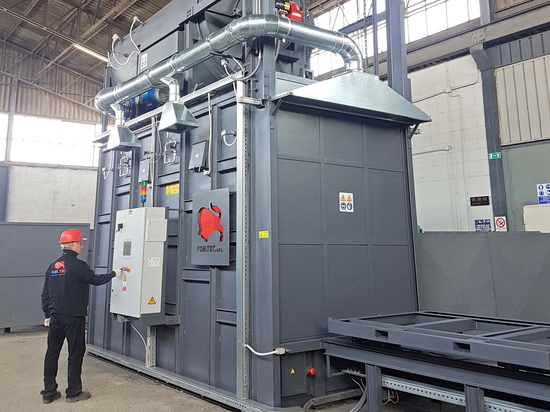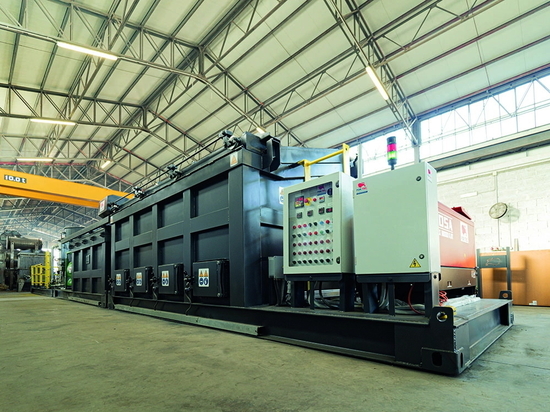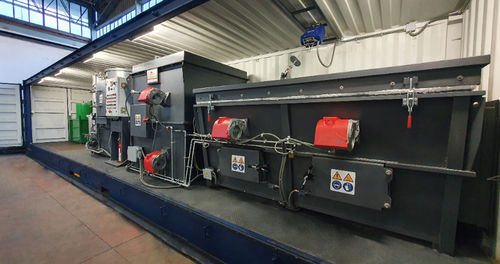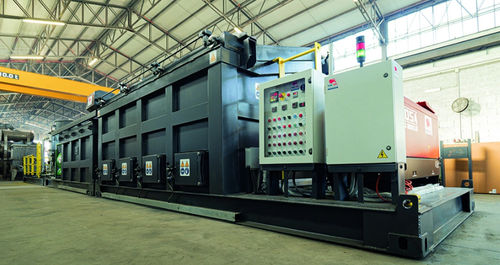
#Industry News
Waste Management After Disasters: The Crucial Role of Mobile Incinerators in Emergencies like Hurricanes, Earthquakes, and Tsunamis
For.Tec inc
Waste Management After Disasters: The Crucial Role of Mobile Incinerators in Emergencies like Hurricanes, Earthquakes, and Tsunamis
Post-disaster waste management is a complex and critical challenge that requires immediate and efficient solutions. After natural disasters such as hurricanes, earthquakes, or tsunamis, infrastructure is often damaged, generating vast amounts of hazardous and non-hazardous waste that pose threats to public health and the environment. In these scenarios, mobile incinerators play an essential role in quickly eliminating waste, preventing the spread of disease and contamination.
These devices, including containerized incinerators, skid-mounted incinerators, and trailer-mounted incinerators, offer the flexibility needed to operate in emergency conditions, where rapid transport and installation are crucial. Mobile incinerators can handle a wide range of materials, from organic waste and animal carcasses to contaminated medical and industrial waste. Their ability to be easily transported and activated in a short time makes them indispensable for reducing health and environmental risks.
Moreover, mobile incinerators are equipped with advanced emission filtering systems, ensuring that disposal processes comply with the strictest environmental regulations. This aspect is crucial to minimize environmental impact and help affected communities recover quickly without further damage to public health.
Investing in mobile incinerators means equipping emergency services with ready-to-use tools to respond to any type of natural disaster, ensuring timely action and effective waste management.
When a natural disaster such as a hurricane, earthquake, or tsunami strikes, the consequences are devastating not only for human life and infrastructure but also for the environment. Enormous amounts of waste accumulate rapidly, including hazardous materials, debris, organic waste, and industrial scrap. Managing post-disaster waste is essential to avoid further contamination risks and ensure a swift return to normalcy. In these situations, mobile incinerators represent a fundamental solution for the rapid and efficient disposal of waste.
Waste Management After a Disaster
After a natural disaster, affected areas find themselves overwhelmed by debris and hazardous waste of all kinds: building rubble, fallen trees, damaged vehicles, animal carcasses, and contaminated waste. If not managed quickly, this accumulation can cause severe health and environmental problems, such as:
• Spread of diseases: The presence of organic waste, animal carcasses, and contaminated materials encourages the proliferation of bacteria and parasites.
• Water contamination: Hazardous waste can seep into the soil and contaminate groundwater.
• Chemical and toxic hazards: Industrial debris and materials containing chemicals require specialized handling.
Historical examples illustrate the magnitude of the problem: during the 2004 Indian Ocean tsunami, it is estimated that over 1 million livestock died in the affected countries, further exacerbating the health and environmental emergency.
The primary challenge is to intervene quickly, often under difficult logistical conditions. Mobile emergency incinerators are efficient tools to address these challenges, providing an immediate and safe disposal solution.
Emergency response operations are often coordinated by non-governmental organizations (NGOs) and humanitarian associations such as:
• EMERGENCY: Provides free, high-quality medical care in emergency zones.
• MSF - Médecins Sans Frontières | Medical humanitarian organisation: Offers emergency medical assistance in crisis and disaster contexts.
• ICRC | International Committee of the Red Cross: Conducts rescue operations, health support, and emergency management.
• Save the Children International | Save the Children International: Protects children and their families in emergency situations.
• World Health Organization (WHO): Coordinates global health interventions and emergency responses.
• The future is equal | Oxfam International: Provides humanitarian aid and support in emergencies to reduce poverty and improve living conditions.
• UNICEF, for every child: Provides humanitarian assistance and child protection in crisis situations.
• Caritas - Ending poverty, promoting justice and restoring dignity: Offers support and humanitarian aid to communities affected by disasters.
These NGOs provide essential logistical, health, and infrastructural support to address the consequences of disasters.
Examples of Mobile Incinerator Use in Natural Disasters
Mobile incinerators have been successfully deployed in various natural disasters to quickly and safely manage accumulated waste. Some examples include:
• Indian Ocean Tsunami (2004): Containerized mobile incinerators were used to dispose of large amounts of debris and animal carcasses, preventing the spread of diseases and contamination of groundwater.
• Haiti Earthquake (2010): The use of skid-mounted incinerators allowed for the rapid elimination of medical and hospital waste, reducing the risk of infections.
• Hurricane Katrina (2005): Trailer-mounted mobile incinerators facilitated the disposal of contaminated waste and animal carcasses, accelerating clean-up operations.
• Japan Earthquake and Tsunami (2011): Containerized incinerators were utilized to safely and efficiently treat debris contaminated by radiation.
FORTEC Mobile Incinerators: T1 Bull and MB Model
FORTEC mobile incinerators, such as the T1 Bull and MB models, offer efficient solutions for waste disposal in emergency scenarios:
• T1 Bull Mobile Incinerator: Capable of disposing of up to 1000 kg/hour, it is available in both skid-mounted and trailer-mounted versions. Ideal for municipal solid waste, medical waste, and animal carcasses.
• MB Containerized Incinerator: Housed in 20- or 40-foot containers, it offers logistical flexibility and advanced filtration systems.
Conclusion
Mobile incinerators, including containerized, skid-mounted, and trailer-mounted units, are indispensable tools for post-disaster waste management. These devices provide an immediate and effective solution for disposing of hazardous and non-hazardous waste that accumulates after natural disasters like earthquakes, hurricanes, and tsunamis. Their ability to be rapidly transported and deployed allows for timely emergency response, reducing the risks of contamination and disease.
Investing in solutions such as FORTEC mobile incinerators ensures that communities affected by catastrophic events have safe and efficient waste management. FORTEC incinerators, like the T1 Bull and MB models, offer versatility, high disposal capacity, and operational reliability under challenging conditions. The option to choose between containerized, skid-mounted, or trailer-mounted configurations allows adaptation to any type of emergency scenario.
Adopting these technologies is not just a matter of waste management but an investment in community resilience and long-term environmental protection. Collaboration between governmental bodies, NGOs, and private companies is essential to implement effective solutions and ensure a coordinated and timely response to natural disasters. Only through an integrated approach and the use of reliable technologies will it be possible to mitigate the consequences of disasters and accelerate the return to normalcy.
Mobile incinerators, including containerized, skid-mounted, and trailer-mounted units, are essential tools for post-disaster waste management. Investing in solutions such as FORTEC mobile incinerators ensures rapid and effective intervention, protecting the environment and public health.






